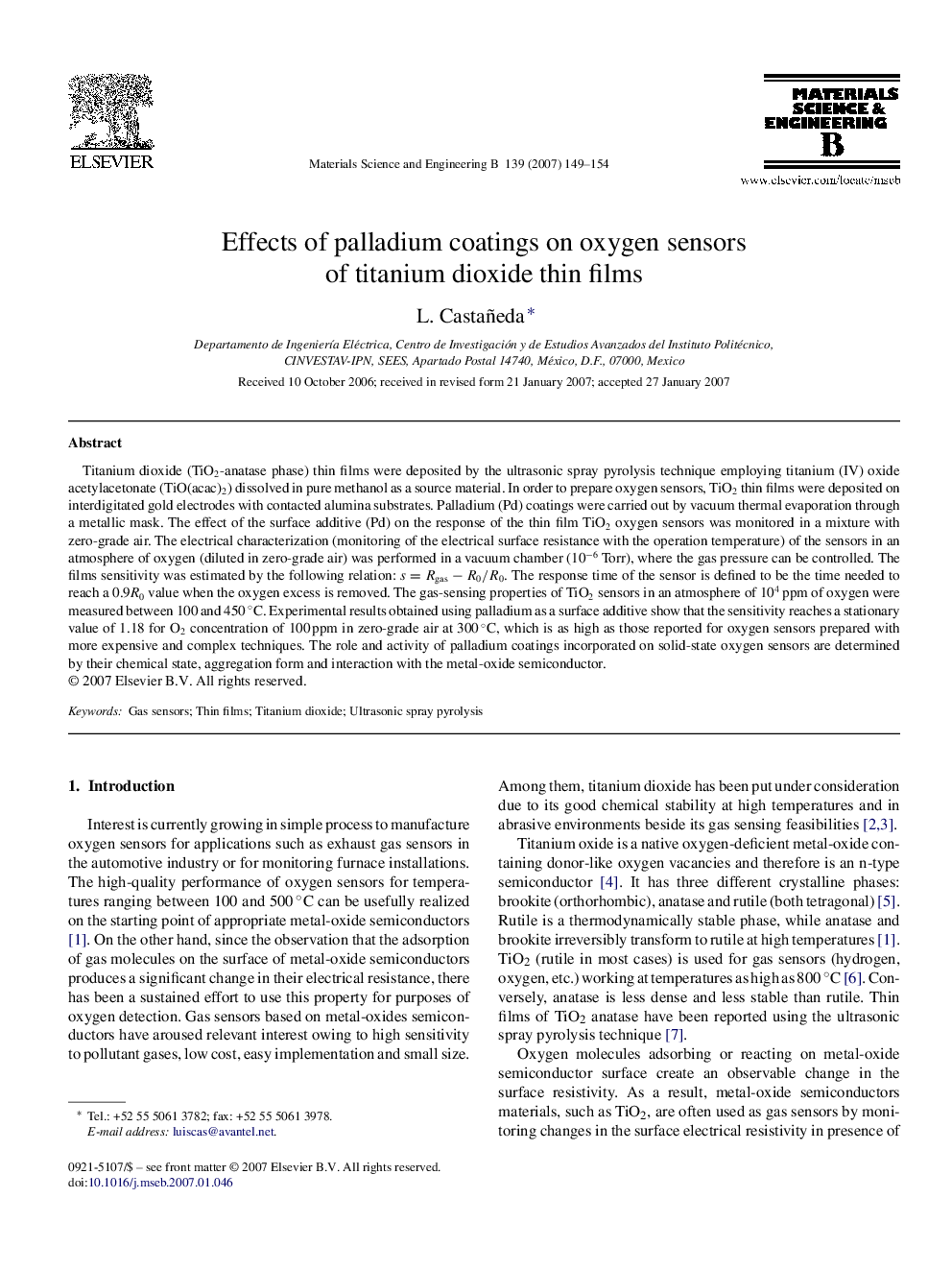| Article ID | Journal | Published Year | Pages | File Type |
|---|---|---|---|---|
| 1531422 | Materials Science and Engineering: B | 2007 | 6 Pages |
Titanium dioxide (TiO2-anatase phase) thin films were deposited by the ultrasonic spray pyrolysis technique employing titanium (IV) oxide acetylacetonate (TiO(acac)2) dissolved in pure methanol as a source material. In order to prepare oxygen sensors, TiO2 thin films were deposited on interdigitated gold electrodes with contacted alumina substrates. Palladium (Pd) coatings were carried out by vacuum thermal evaporation through a metallic mask. The effect of the surface additive (Pd) on the response of the thin film TiO2 oxygen sensors was monitored in a mixture with zero-grade air. The electrical characterization (monitoring of the electrical surface resistance with the operation temperature) of the sensors in an atmosphere of oxygen (diluted in zero-grade air) was performed in a vacuum chamber (10−6 Torr), where the gas pressure can be controlled. The films sensitivity was estimated by the following relation: s=Rgas−R0/R0s=Rgas−R0/R0. The response time of the sensor is defined to be the time needed to reach a 0.9R0 value when the oxygen excess is removed. The gas-sensing properties of TiO2 sensors in an atmosphere of 104 ppm of oxygen were measured between 100 and 450 °C. Experimental results obtained using palladium as a surface additive show that the sensitivity reaches a stationary value of 1.18 for O2 concentration of 100 ppm in zero-grade air at 300 °C, which is as high as those reported for oxygen sensors prepared with more expensive and complex techniques. The role and activity of palladium coatings incorporated on solid-state oxygen sensors are determined by their chemical state, aggregation form and interaction with the metal-oxide semiconductor.
